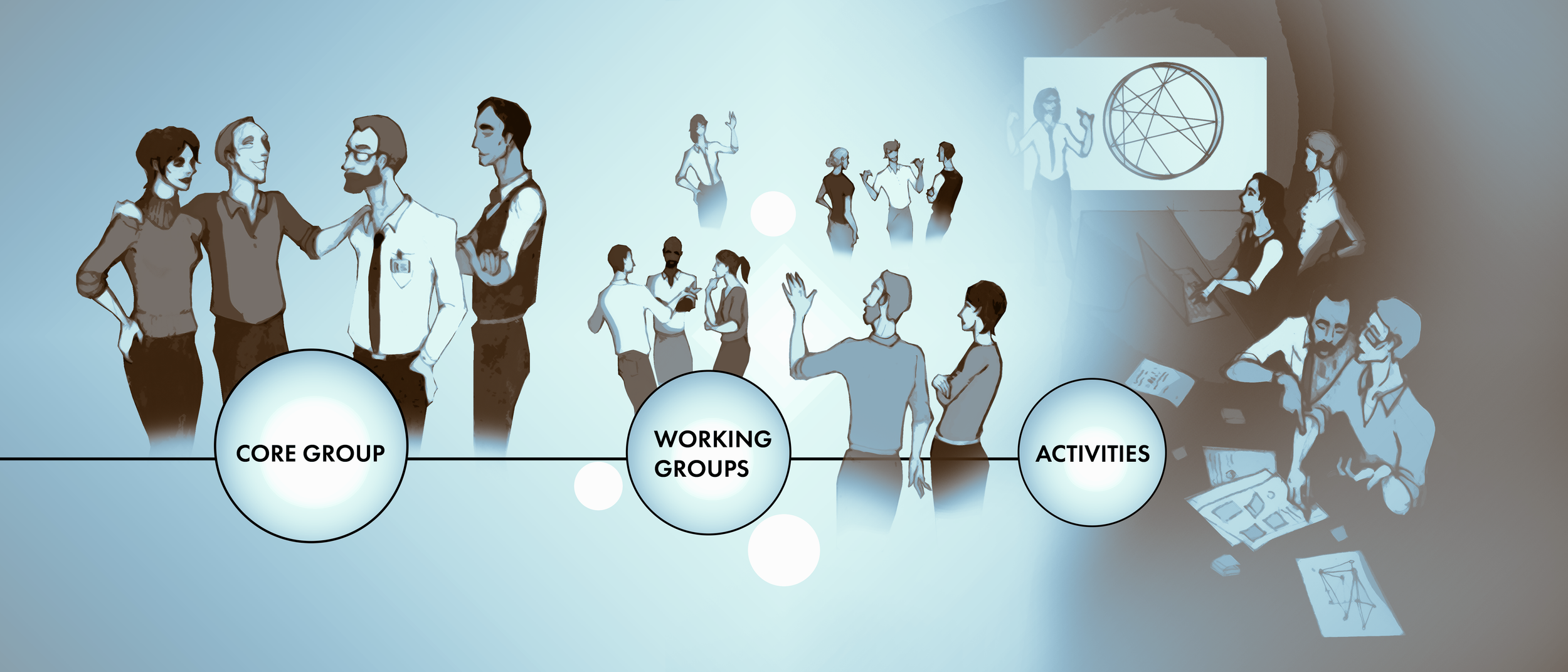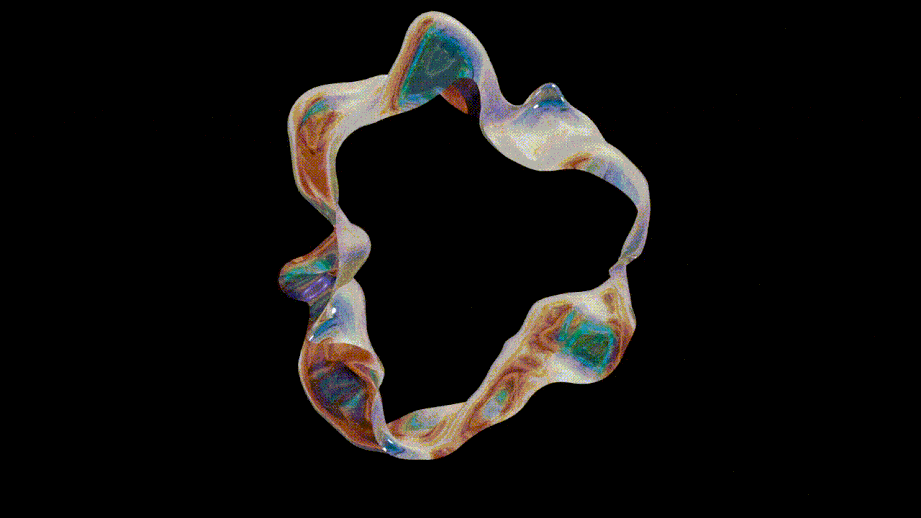OUR STORY
Established in 2017, LINXS is an advanced studies institute whose mission is to promote science and education focusing on the use of neutrons and X-rays.
LINXS brings together world-leading scientists for short-term focused research visits and creates international networks. It is a place to explore new ideas and research questions, to discuss methods and approaches, as well as meet and collaborate with scientists from around the world and from different disciplines and organisations.
HOW THEMES WORK
LINXS’ work is based mostly around Themes, governed by a core group, with multiple working groups connected to it. The Themes develop networks, research and activities in different fields of science relevant for one or more of the LINXS focus areas. A Theme is a time-limited collaborative effort over about 3 years to enable a network of researchers to push the frontiers of research in a specific topic.
A Theme has some funding to boost the formation and activities of the network, with the goal of ultimately making the network more than the sum of its parts. Themes are suggested by the scientific community through regular calls for Themes. Any group of researchers from any organisation can propose a Theme. To lead activities requires a contribution from the host organisation or organisations of the Principal Investigators. Suggestions for themes are solicited via a call procedure and the proposals are evaluated by independent experts.
Core group
A theme is governed by a core group composed of prominent researchers. The core group leads the theme and defines the general direction for theme activities. The core group contains representatives from each of the Working Groups, and is chaired by the Theme Leader.
Working groups
A theme unites working groups. A working group is composed of researchers developing various scientific activities appropriate to the specific scope of that working group. Researchers active in working groups and core groups are expected to come from a diverse set of organisations, and not just those who co-fund a Theme.
Activities
Each working group organises activities to reach its defined goals. Activities include: Conferences, Research Programmes, Workshops, Hackathons, Sabbaticals & Guest researcher visits, Schools, Seminars, Webinars and Training & Outreach activities, but are not limited to these.
For more specific information on how to run a theme, please refer to the LINXS Handbook, among other things the handbook contains descriptions of typical activities under the entry “Which activities does LINXS support?“
THE MISSION OF LINXS
Establish LINXS as a world leading advanced studies institute for all scientific and technological disciplines which can benefit from the use of neutrons and x-rays.
Attract outstanding scientists for short-term focused research visits to contribute to excellent science. The goal is to further research collaboration within national and international research networks, especially for early career researchers.
Promote science and education focusing on use of neutrons and x-rays in research and development, and help educate potential users of ESS, MAX IV and other major research infrastructures to enable ground-breaking research.
Create international networks and enhance the visibility of Sweden internationally in the use of neutrons and x-rays. LINXS seeks to invigorate the dialogue between academia and society in all aspects of large-scale research infrastructures using neutron and x-rays. The goal is to become a nucleus for local, national, and international activities in the Science Village and a think-tank initiating new ideas and themes.
ORGANISATION
LINXS currently has the status of a university Centre hosted at Lund University with a Board, a Management Group, and a Scientific Advisory Board. LINXS works under strategic focus areas, reflecting broad long-term research priorities. These are Soft matter, Life Science and Hard Matter, and further defined below.
The Management group consists of a Director, a Deputy Director, two Co-Directors, and a Head of administration. The Deputy Director and Co-directors are positioned to provide representation of the focus areas. Other than seeking to maximise overall impact and progress, the Director’s scientific position is neutral. The Management Group meets on a regular basis, usually twice a week. The Management Group is supported by a senior strategist and by administrative, communication, and support staff who are overseen by the head of administration. Directors and the bulk of staff are involved part-time to keep costs down.
The Board consists of members that cover the scientific disciplines and represent the current stakeholder arrangements. It contains representatives from MAX IV and ESS, a representative for the national interest (currently nominated by URFI, the Swedish University Reference group For research Infrastructures) as well as PhD and undergraduate student representation, as per the requirements of our parent organisation.
The Scientific Advisory Board (SAB) is an international independent panel that reviews and prioritises LINXS Theme proposals and reviews ongoing activities. The SAB contains international members, with broad and high-level scientific expertise in the focus areas in relation to large scale research infrastructures. The Board normally meets at least twice a year. The SAB membership and its Chair are by the invitation of the Board for a period of 3 years (renewable).
There is by design a "church and state" separation of the duties of the Board and the SAB. The Board a priori approves budgets and plans for the coming year but does not, and should not, have influence on the scientific content of the activities of LINXS. Independent evaluation and guidance as to the scientific content of LINXS and the evaluation of themes is performed by the SAB.
THE FOCUS AREAS
SOFT MATTER
Examples of Soft Matter includes liquids, colloids, polymers, foams, gels, granular materials, liquid crystals*, and a number of biological materials*. These materials share an important common feature in that predominant physical behaviors occur at an energy scale comparable with room temperature thermal energy.
LIFE SCIENCE
Life and biomedical sciences are fields of science* that involve the scientific study of living organisms – such as microorganisms, plants, animals, and human beings – as well as any adjacent fields. While biology and medicine remains the centerpiece of the life sciences, technological advances in molecular biology and biotechnology have led to a burgeoning of specializations and interdisciplinary fields.
HARD MATTER
Hard Matter includes materials science* and solid-state physics, the study of rigid matter, or solids, using experimentation, characterisation techniques and theory. It is the largest branch of condensed matter physics*. Solid-state physics studies how the large-scale properties of solid materials result from their atomic-scale properties. Thus, solid-state physics forms a theoretical basis of materials science. It has direct applications, e.g. in the technology of transistors and semiconductors and all solid-state nanoscience*. In this category LINXS also includes areas such as geology, geoarchaeology and studies of fossilised matter.
*NB links to Wikipedia entries for a general layperson's introduction
DEFINITION OF LINXS FELLOWSHIPS
There are three different fellowship titles associated with LINXS, depending on financing framework, seniority and vetting process.
LINXS Fellow
LINXS fellows are involved in the work and development of a LINXS core group or working group and/or guest researchers, creating various scientific activities such as workshops, schools, research programmes and hackathons. Depending on the level of activity and involvement, a LINXS fellow can be a beneficiary of funds from the institute, either indirectly, by benefiting from housing and allowances as a guest researcher, or directly, as in getting a part of their salary contributed by the institute (only valid for researchers from partner organisations). LINXS fellows have to go through the application procedure for a Fellowship in the application portal, and are recommended by the core group and then appointed by the Management Group.
LINXS Postdoctoral Fellow
The general rule is that postdoctoral fellows partially resourced through LINXS or partnering organisations are embedded and employed via another organisation with an associated scientifically relevant environment. Where these can be located is dependent on the specific funding framework, but in principle there is no geographical limit. In rare instances, such fellows can be directly employed by and hosted at LINXS, but this is always on the specific request of funders or resourcing consortia and subject to approval by the LINXS Board.
It is expected that a LINXS postdoctoral fellow works on a scientifically or methodologically important research project connected to one or more Working Groups or specific projects. Postdoctoral fellowships can be available depending on separate, directed funding and are announced via special calls, officially vetted by the Scientific Advisory Board and approved by the Management Group.
LINXS Junior Fellow
Junior fellows are students, PhDs, or postdocs who contribute in-kind in a Working Group. There needs to be a strong expectation that their involvement will further their current projects and careers. In order to both ensure that this is the case and to provide a mark of excellence, junior fellowships are officially vetted and approved by the Management Group via an application procedure for Fellowships.






